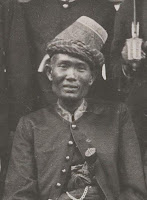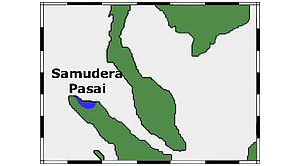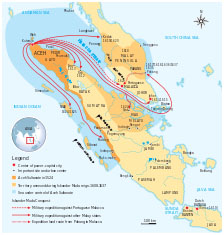TEKNIK-TEKNIK SUPERVISI AKADEMIK di SEKOLAH
Satu di antara tugas kepala sekolah adalah melaksanakan supervisi akademik. Untuk melaksanakan supervisi akademik secara efektif diperlukan keterampilan konseptual, interpersonal dan teknikal (Glickman, at al. 2007). Oleh sebab itu, setiap Kepala sekolah harus memiliki keterampilan teknikal berupa kemampuan menerapkan teknik-teknik supervisi yang tepat dalam melaksanakan supervisi akademik. Teknik-teknik supervisi akademik meliputi dua macam, yaitu: individual dan kelompok (Gwyn, 1961).
Teknik supervisi akademik ada dua yaitu: individual dan kelompok seperti gambar berikut.
1. Teknik Supervisi Individual
Teknik supervisi individual adalah pelaksanaan supervisi perseorangan terhadap guru. Supervisor di sini hanya berhadapan dengan seorang guru. Dari hasil supervisi ini dapat diketahui kualitas pembelajaran guru bersangkutan.
Teknik supervisi individual ada lima macam adalah sebagai berikut.
a. Kunjungan Kelas, (Classroom Visitation)
Kepala sekolah atau supervisor datang ke kelas untuk mengobservasi guru mengajar. Dengan kata lain, untuk melihat apa kekurangan atau kelemahan yang sekirannya perlu diperbaiki.
Tahap-tahap kunjungan kelas terdiri dari empat tahap yaitu:
(1) tahap persiapan. Pada tahap ini, supervisor merencanakan waktu, sasaran, dan cara mengobservasi selama kunjungan kelas,
(2) tahap pengamatan selama kunjungan. Pada tahap ini, supervisor mengamati jalannya proses pembelajaran berlangsung,
(3) tahap akhir kunjungan. Pada tahap ini, supervisor bersama guru mengadakan perjanjian untuk membicarakan hasil-hasil observasi, dan
(4) tahap terakhir adalah tahap tindak lanjut.
b. Kunjungan Observasi (Observation Visits)
Guru-guru ditugaskan untuk mengamati seorang guru lain yang sedang mendemonstrasikan cara-cara mengajar suatu mata pelajaran tertentu. Kunjungan observasi dapat dilakukan di sekolah sendiri atau dengan mengadakan kunjungan ke sekolah lain. Secara umum, aspek-aspek yang diobservasi adalah: (1) usaha-usaha dan aktivitas guru-siswa dalam proses pembelajaran, (2) cara menggunakan media pengajaran, (3) variasi metode, (4) ketepatan penggunaan media dengan materi, (5) ketepatan penggunaan metode dengan materi, dan (6) reaksi mental para siswa dalam proses belajar mengajar.
Pelaksanaan observasi melalui tahap: persiapan, pelaksanaan, penutupan, penilaian hasil observasi;dan tindak lanjut.
Dalam rangka melakukan observasi, seorang supervisor hendaknya telah mempersiapkan instrumen observasi, menguasai masalah dan tujuan supervisi.
c. Pertemuan Individual
Pertemuan individual adalah satu pertemuan, percakapan, dialog, dan tukar pikiran antara supervisor dan guru.
Tujuannya adalah:
(1) mengembangkan perangkat pembelajaran yang lebih baik,
(2) meningkatkan kemampuan guru dalam pembelajaran, dan
(3) memperbaiki segala kelemahan dan kekurangan pada diri guru
Swearingen (1961) mengklasifikasi empat jenis pertemuan (percakapan) individual sebagai berikut.
(1) Classroom-conference, yaitu percakapan individual yang dilaksanakan
di dalam kelas ketika murid-murid sedang meninggalkan kelas (istirahat).
(2) Office-conference, yaitu percakapan individual yang dilaksanakan di ruang
kepala sekolah atau ruang guru, di mana sudah dilengkapi dengan alat-alat
bantu yang dapat digunakan untuk memberikan penjelasan pada guru.
(3) Causal-conference. yaitu percakapan individual yang bersifat informal,
yang dilaksanakan secara kebetulan bertemu dengan guru
(4) Observational visitation. yaitu percakapan individual yang dilaksanakan
setelah supervisor melakukan kunjungan kelas atau observasi kelas.
Hal yang dilakukan Supervisor dalam pertemuan individu :
(5) berusaha mengembangkan segi-segi positif guru,
(6) mendorong guru mengatasi kesulitan-kesulitannya,
(7) memberikan pengarahan, dan
(8) menyepakati berbagai solusi permasalahan dan menindaklanjutinya.
d. Kunjungan Antar Kelas
Kunjungan antar kelas adalah guru yang satu berkunjung ke kelas yang lain di sekolah itu sendiri. Tujuannya adalah untuk berbagi pengalaman dalam pembelajaran.
Cara-cara melaksanakan kunjungan antar kelas adalah sebagai berikut.
(1) Jadwal kunjungan harus direncanakan.
(2) Guru-guru yang akan dikunjungi harus diseleksi.
(3) Tentukan guru-guru yang akan mengunjungi
(4) Sediakan segala fasilitas yang diperlukan.
(5) Supervisor hendaknya mengikuti acara ini dengan pengamatan yang cermat.
(6) Adakah tindak lanjut setelah kunjungan antar kelas selesai? misalnya dalam bentuk percakapan pribadi, penegasan, dan pemberian tugas-tugas tertentu.
(7) Segera aplikasikan ke sekolah atau ke kelas guru bersangkutan, dengan menyesuaikan pada situasi dan kondisi yang dihadapi;
(8) Adakan perjanjian-perjanjian untuk mengadakan kunjungan antar kelas berikutnya.
e. Supervisi Kelompok
Teknik supervisi kelompok adalah satu cara melaksanakan program supervisi yang ditujukan pada dua orang atau lebih. Guru-guru yang yang akan disupervisi berdasarkan hasil analisis kebutuhan, dan analisis kemampuan kinerja guru, kemudian dikelompokan berdasarkan kebutuhan guru. Kemudian guru diberikan layanan supervisi sesuai dengan permasalahan atau kebutuhan yang diperlukan. Dalam teknik supervisi kelompok, terdapat beberapa kegiatan yang dapat dilakukan antara lain adalah sebagai berikut.
(1) Mengadakan pertemuan atau rapat (meeting), Seorang kepala sekolah menjalankan tugasnya berdasarkan rencana yang telah disusun. Termsuk mengadakan rapat-rapat secara periodik dengan guru-guru, dalam hal ini rapat-rapat yang diadakan dalam rangka kegiatan supervisi. Rapat tersebut antara lain melibatkan KKG, MGMP, dan rapat dengan pihak luar sekolah.
(2) Mengadakan diskusi kelompok (group discussions), Diskusi kelompok dapat diadakan dengan membentuk kelompok-kelompok guru bidang studi sejenis. Di dalam setiap diskusi, supervisor atau kepala sekolah memberikan pengarahan, bimbingan, nasihat-nasihat dan saran-saran yang diperlukan.
(3) Mengadakan penataran-penataran (inservice-training), Teknik ini dilakukan melalui penataran-penataran, misalnya penataran untuk guru bidang studi tertentu. Mengingat bahwa penataran pada umumnya diselenggarakan oleh pusat atau wilayah, maka tugas kepala sekolah adalah mengelola dan membimbing pelaksanaan tindak lanjut (follow-up) dari hasil penataran.
 Bimbing Dong
Bimbing Dong






